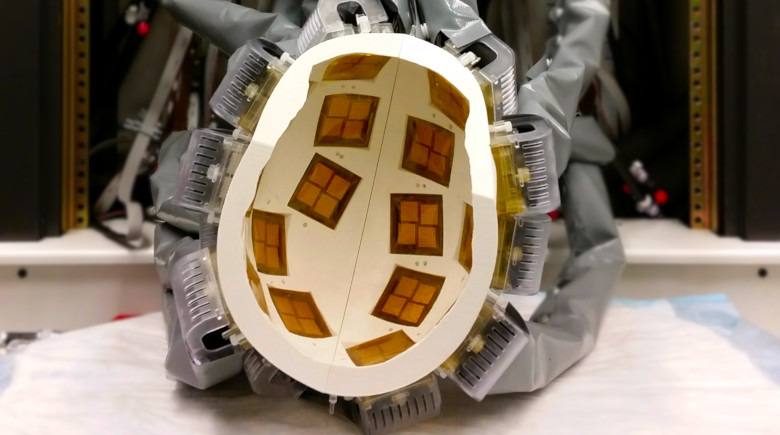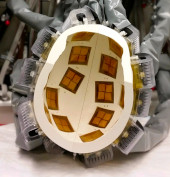
Patient discomfort and the need for magnetic resonance imaging (MRI) guidance present significant barriers to the widespread adoption of focused ultrasound (FUS). This work aims to implement a new type of ultrasound transducer array toward replacing MRI guidance and improving patient comfort. To achieve this we present a technique for designing patient-specific scaffolds to house reusable ultrasound transducers. Based on MRI and CT neuroimaging data, the scaffolds can be optimised for treating specific brain treatment sites while also conforming with the patient’s skull.
Based on CT images from an ex-vivo skull, we used algorithms to automatically design and optimise an array. The array was assembled using a 3D printed scaffold and was assessed numerically and experimentally by way of in vivo experiments in rodents. Numerical simulations showed comparable performance to a hemispherical dome design, the current design approved clinically for transcranial focused ultrasound. Benchtop and in vivo experiments confirmed the device’s ability to focus ultrasound through the skull and safely open the blood brain barrier in the rodents. Skull-conformal phased arrays stand to improve patient comfort and to accelerate the adoption of transcranial FUS therapy by improving access to the technology.

